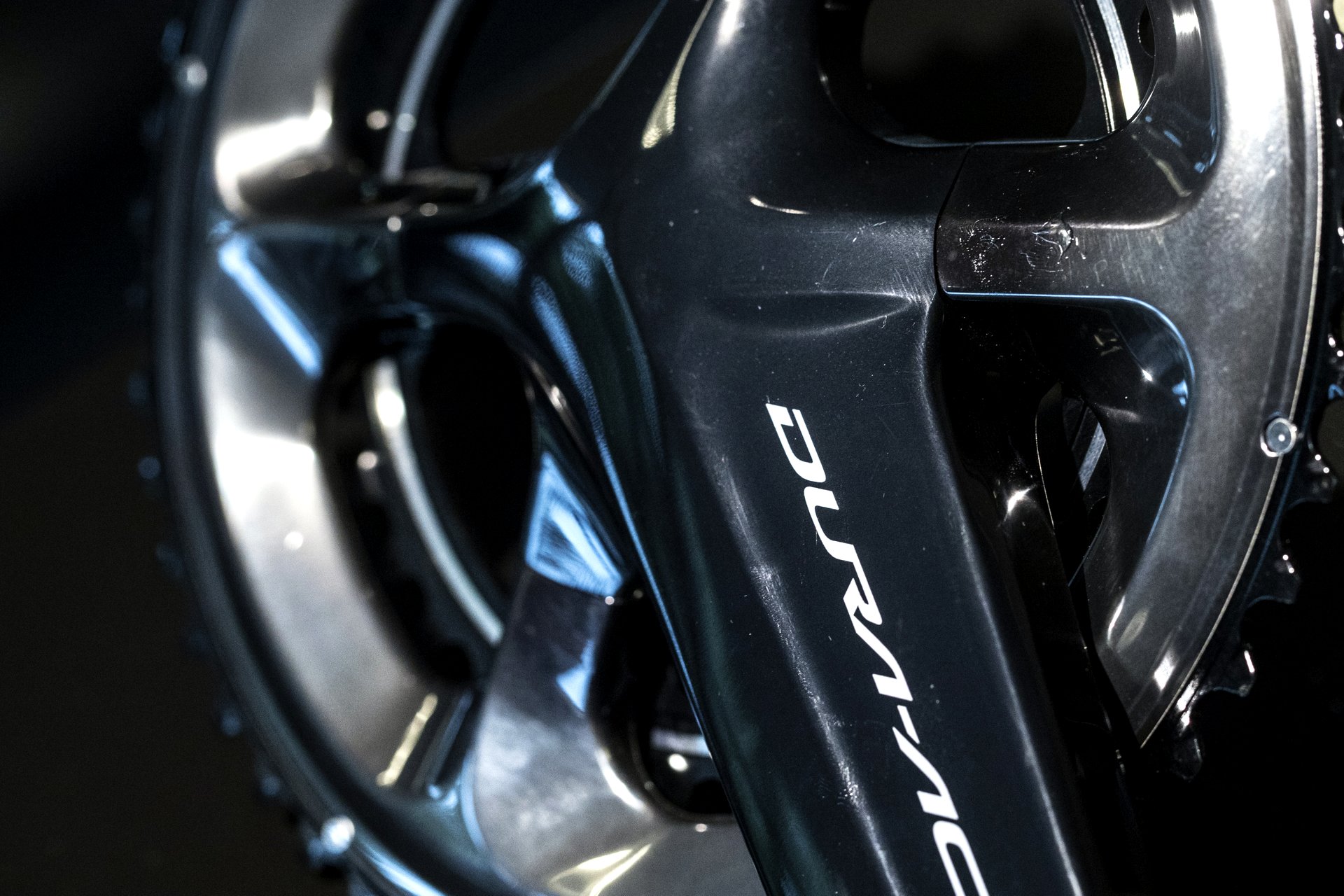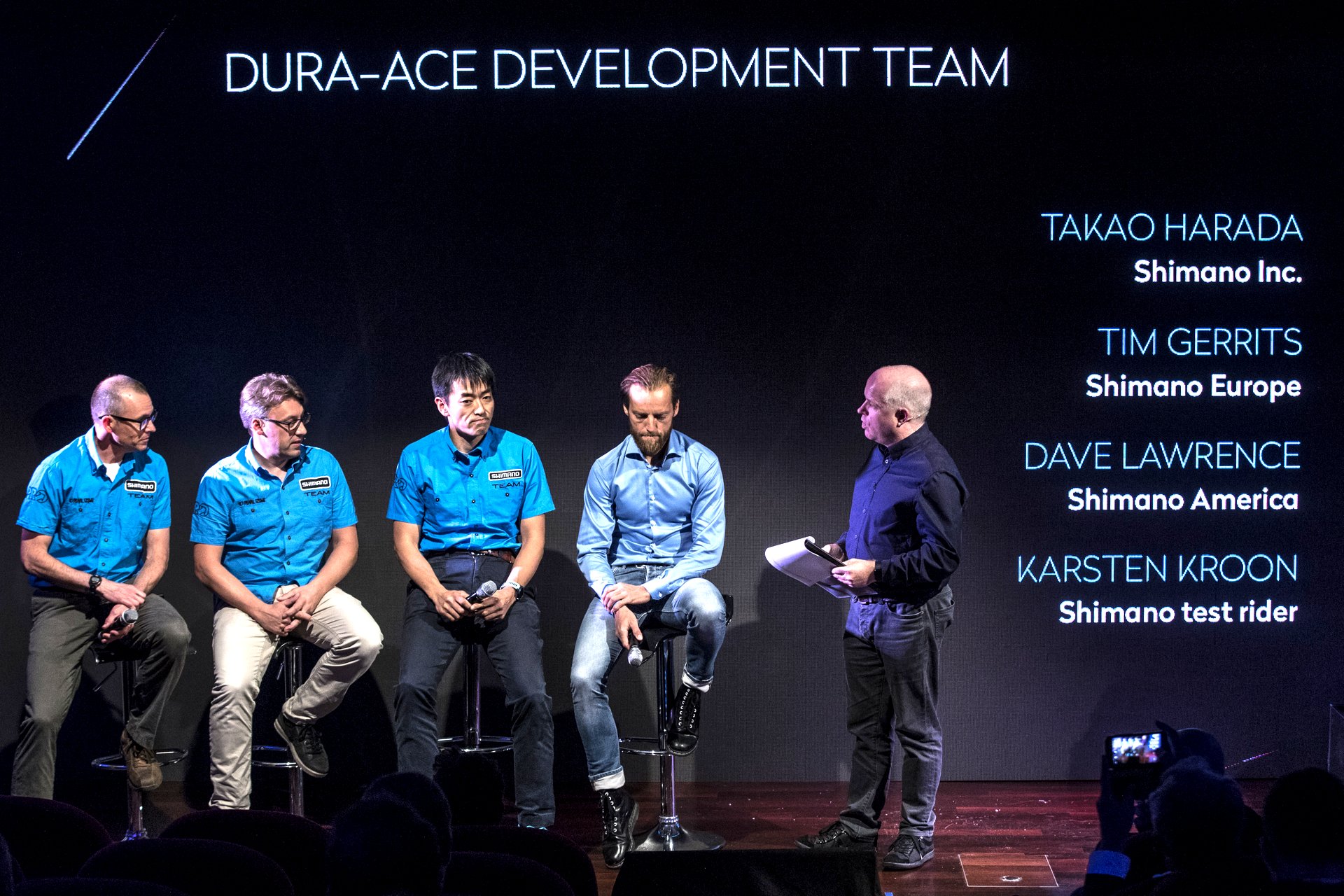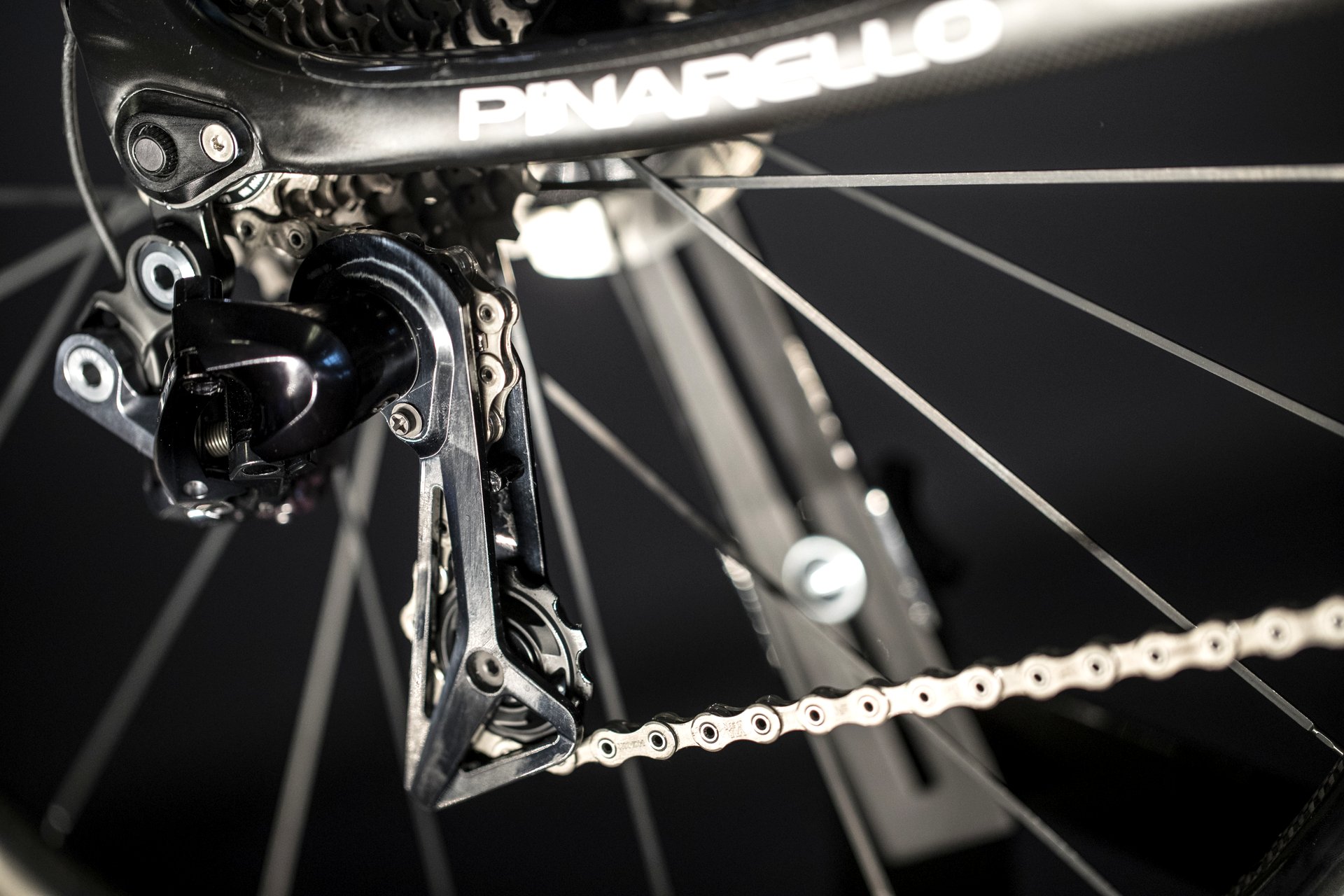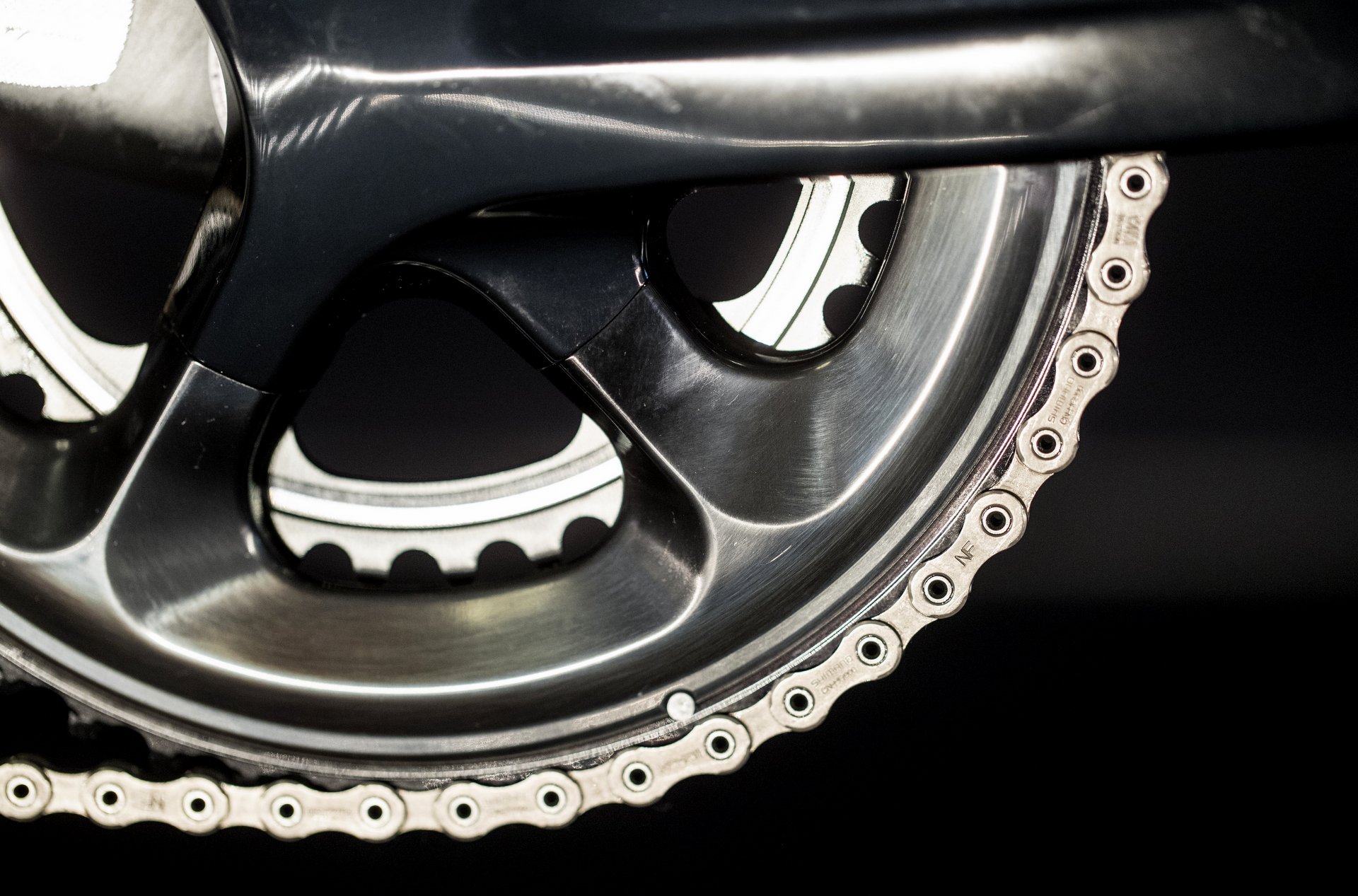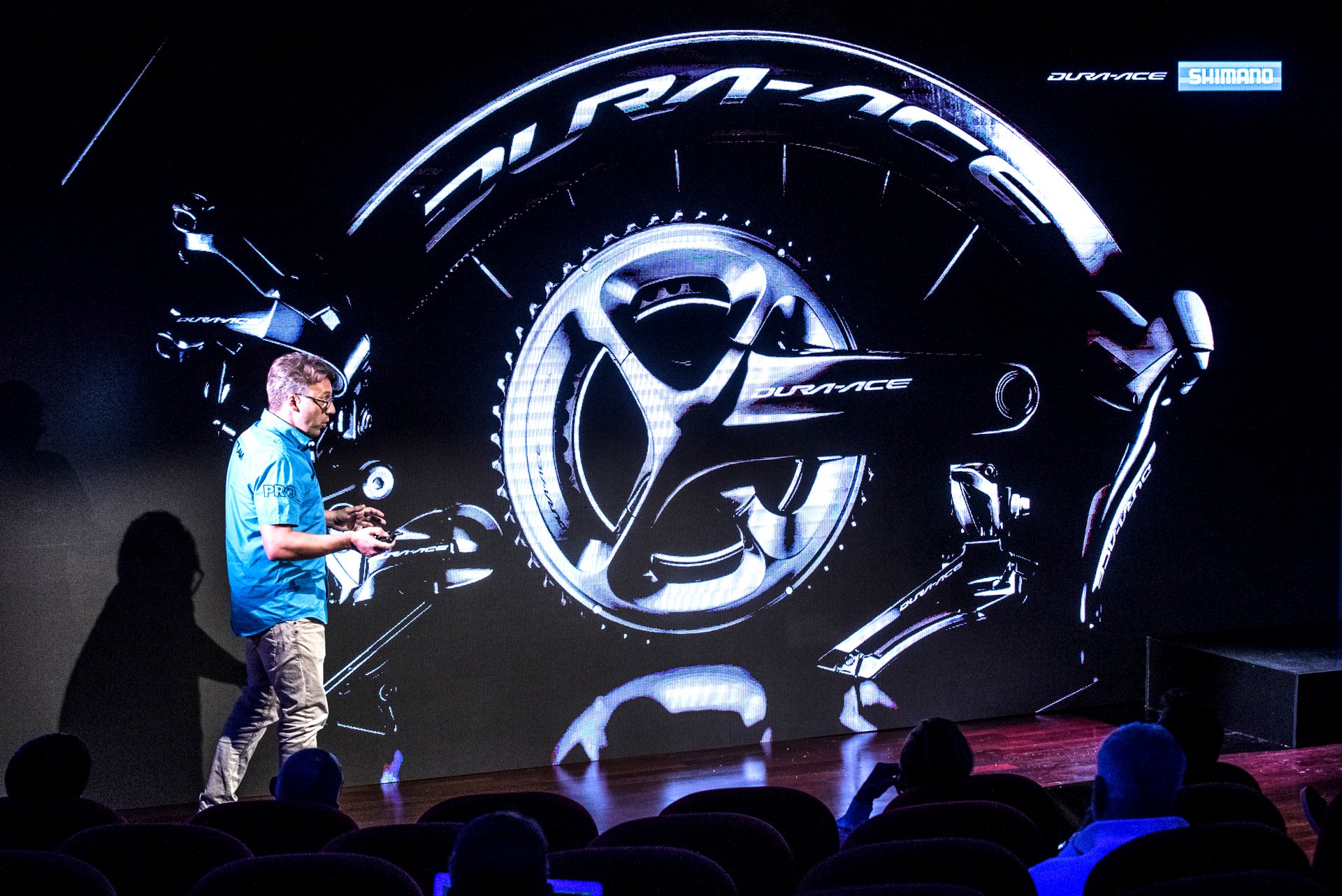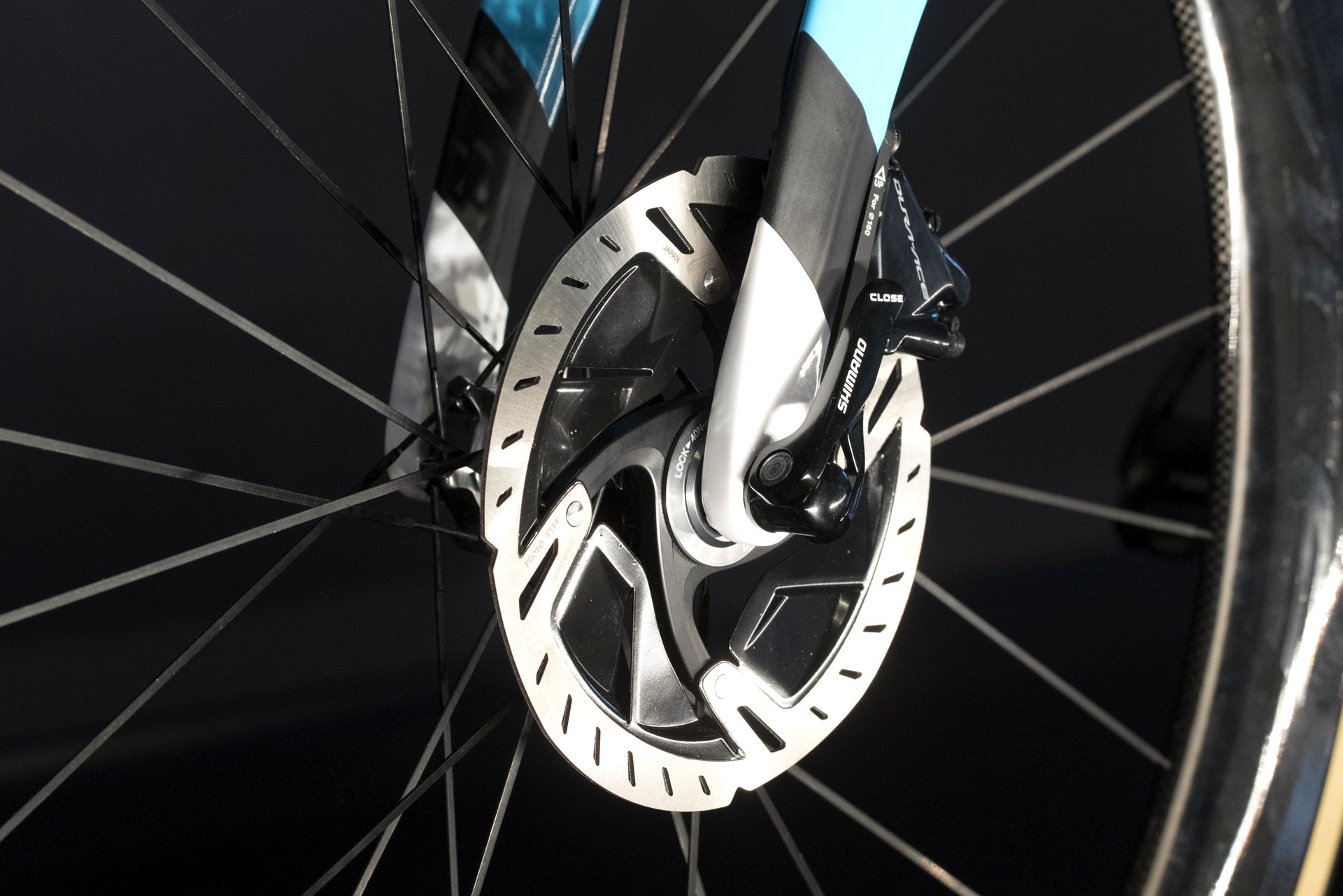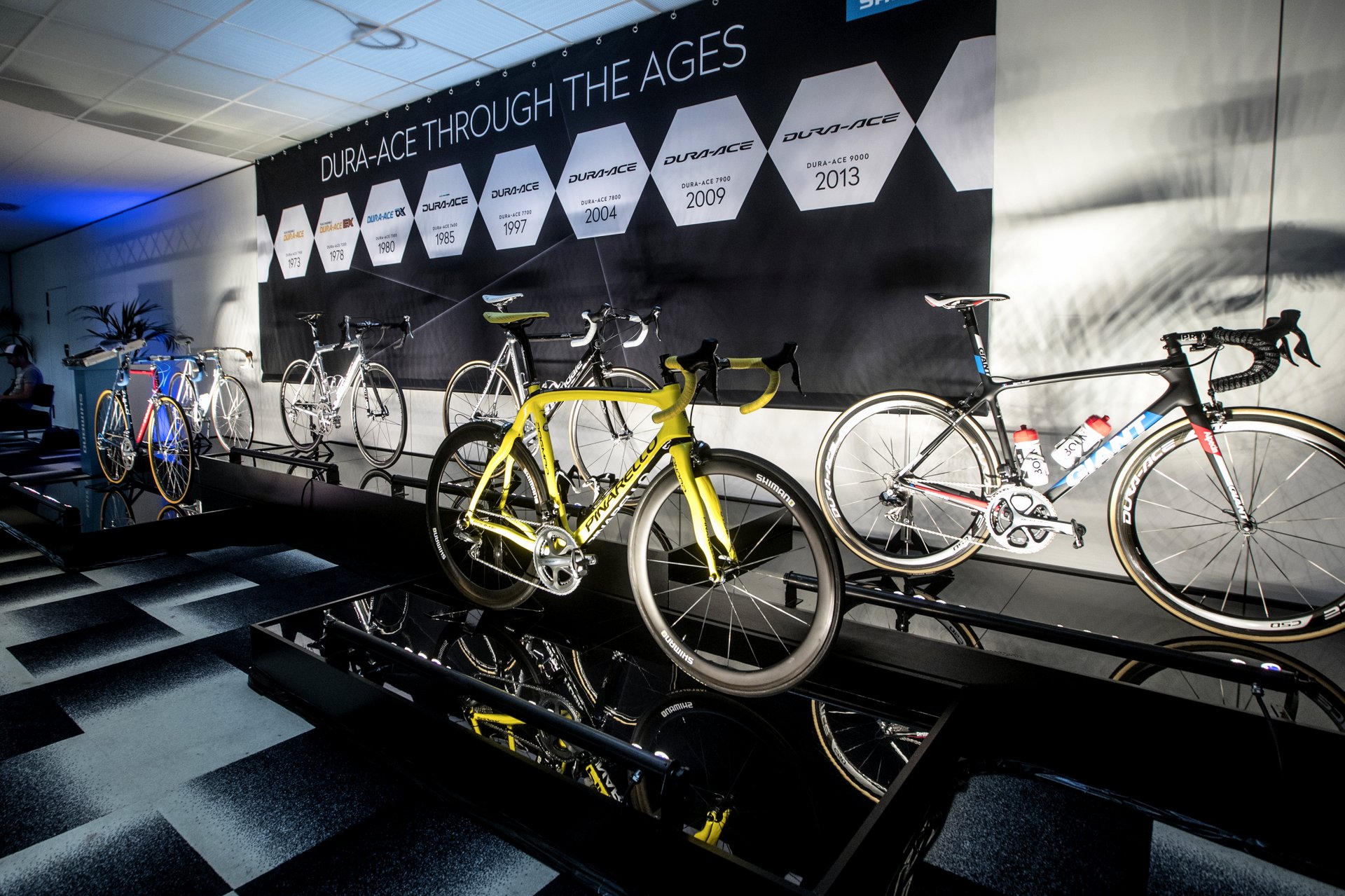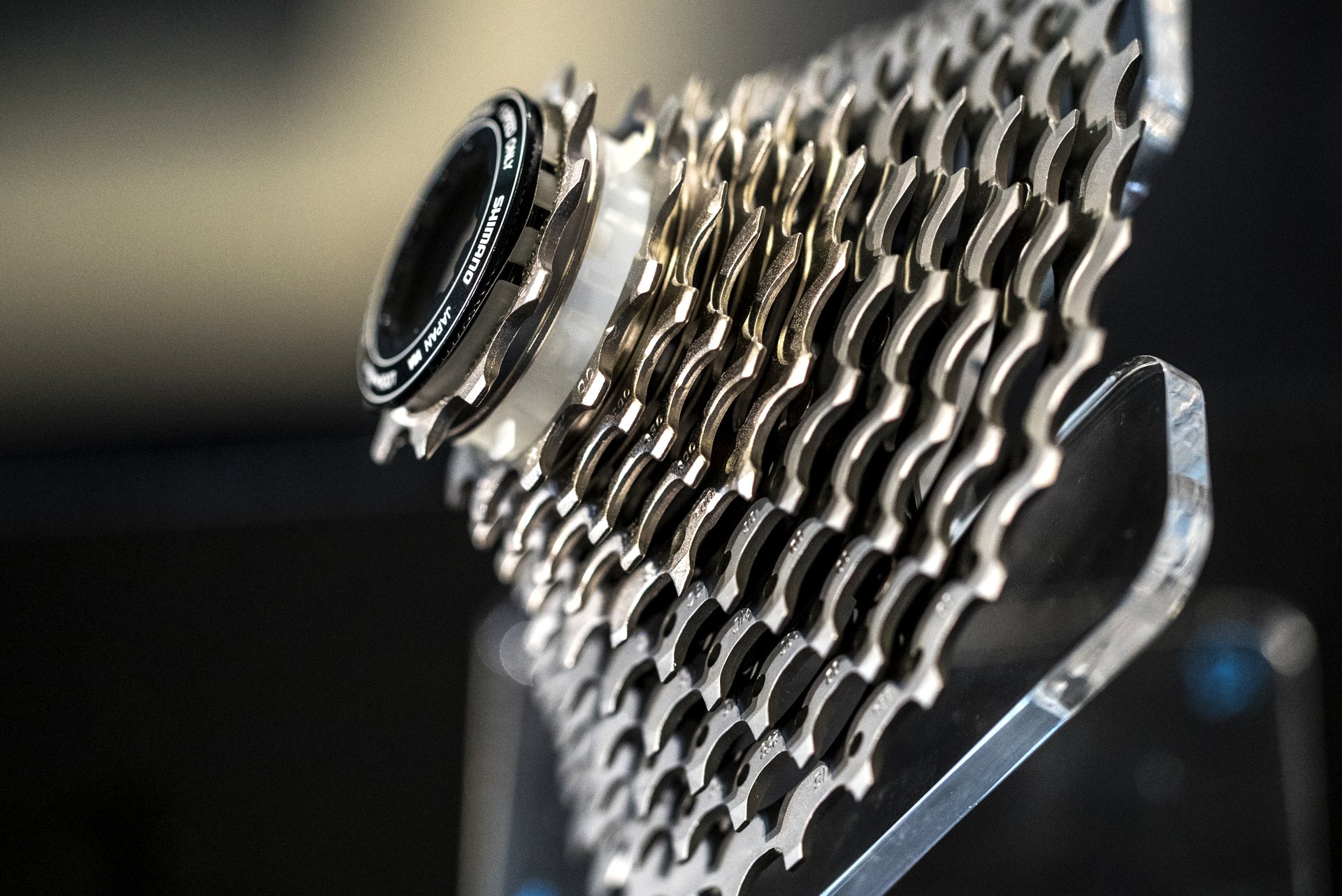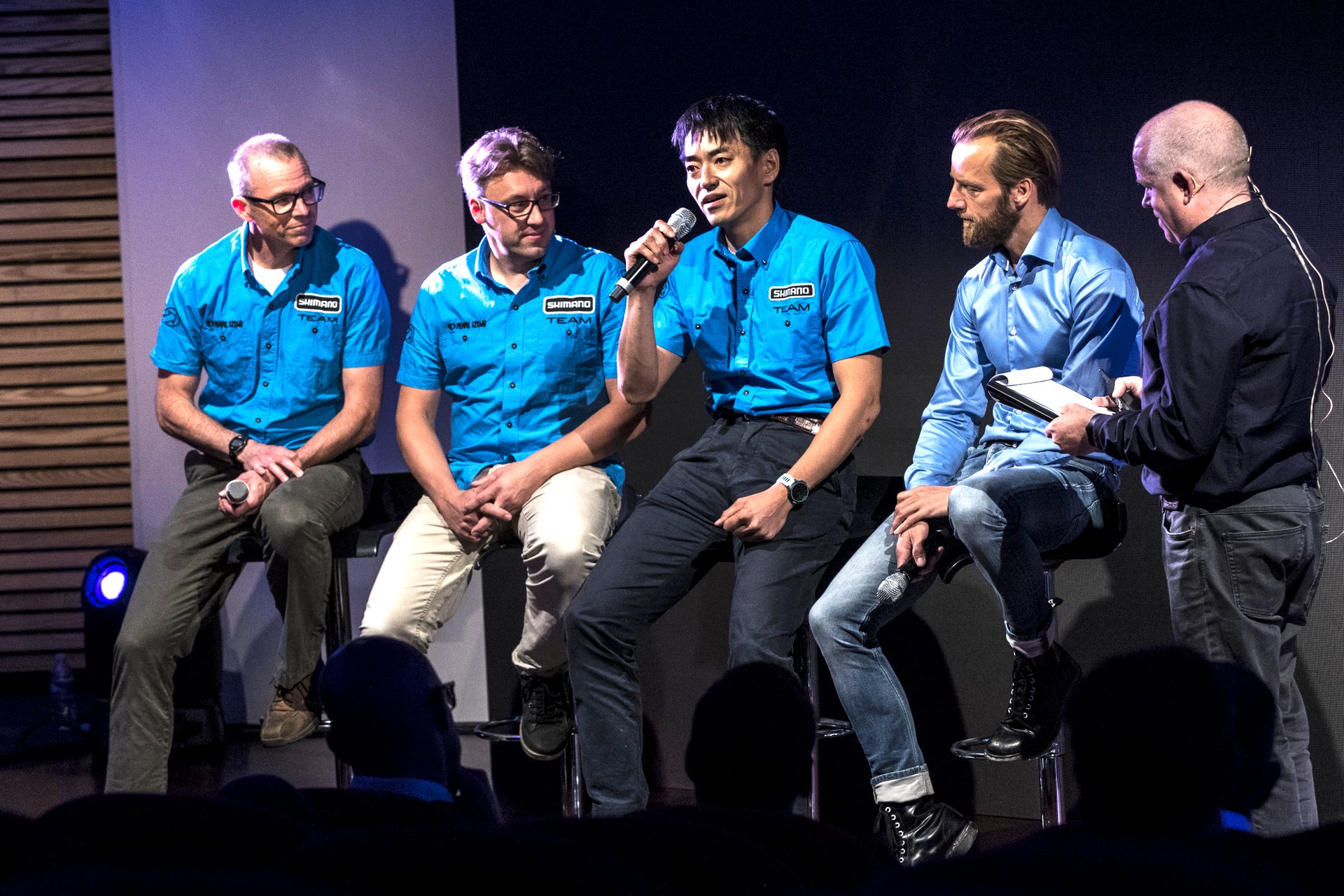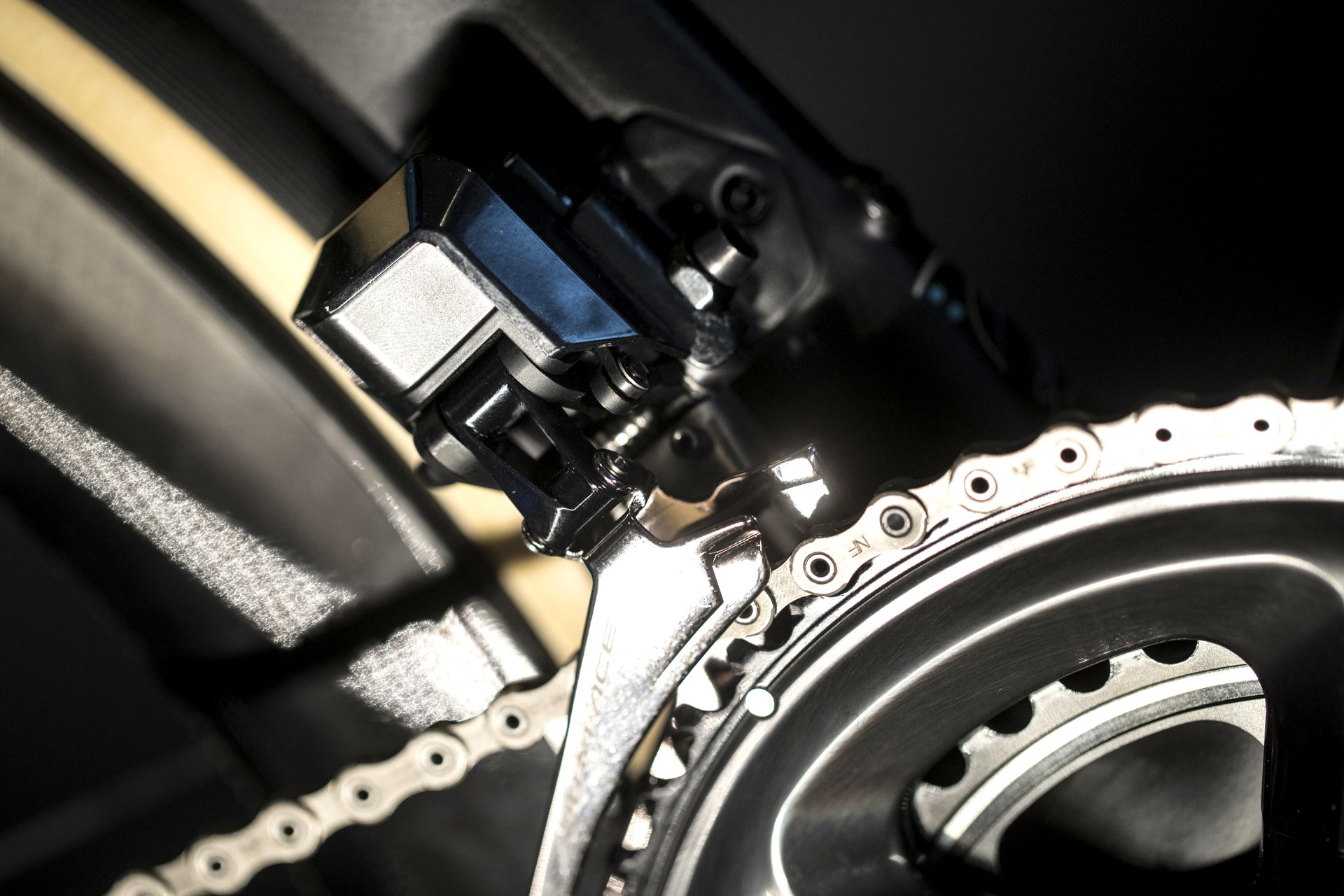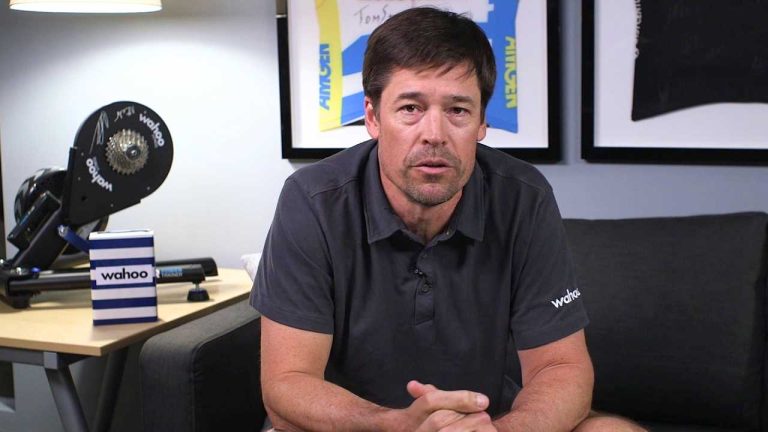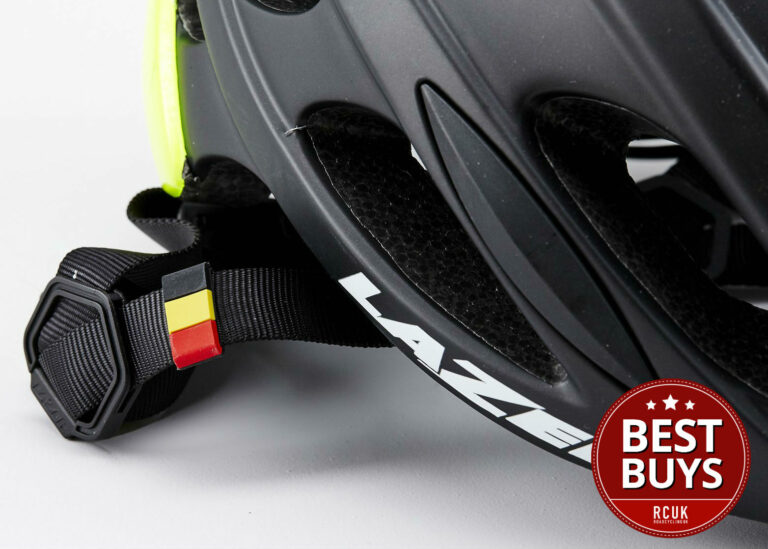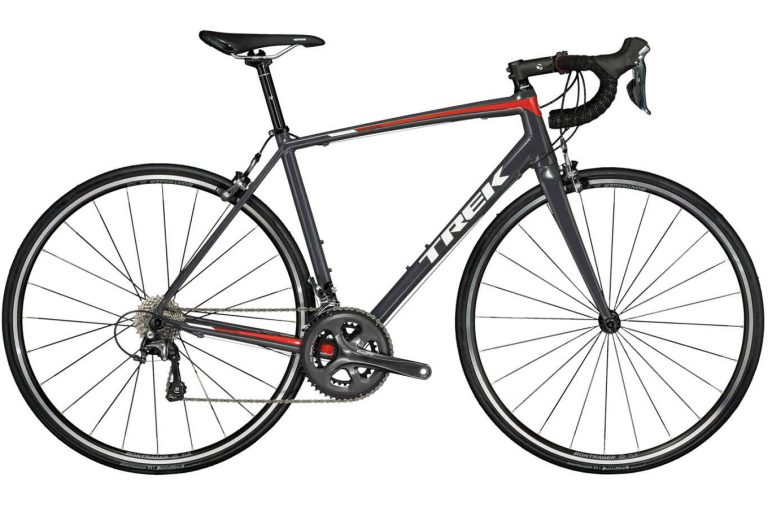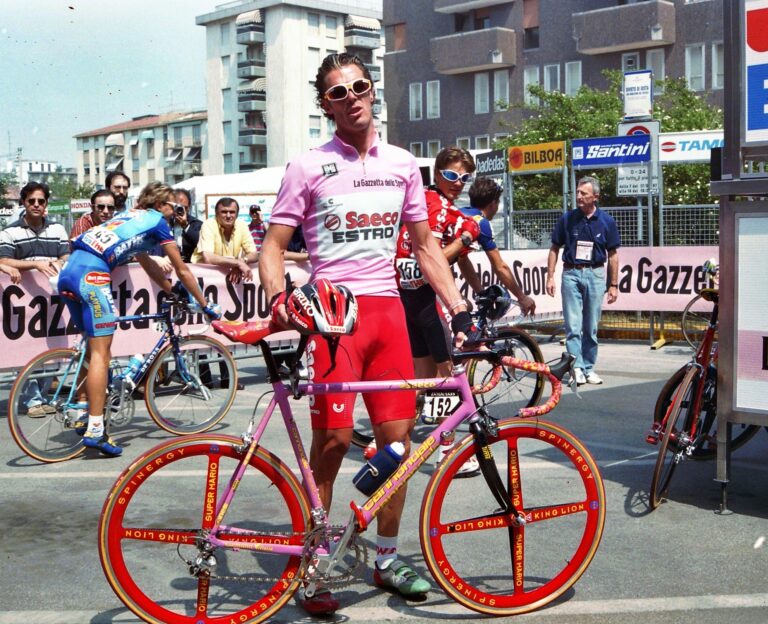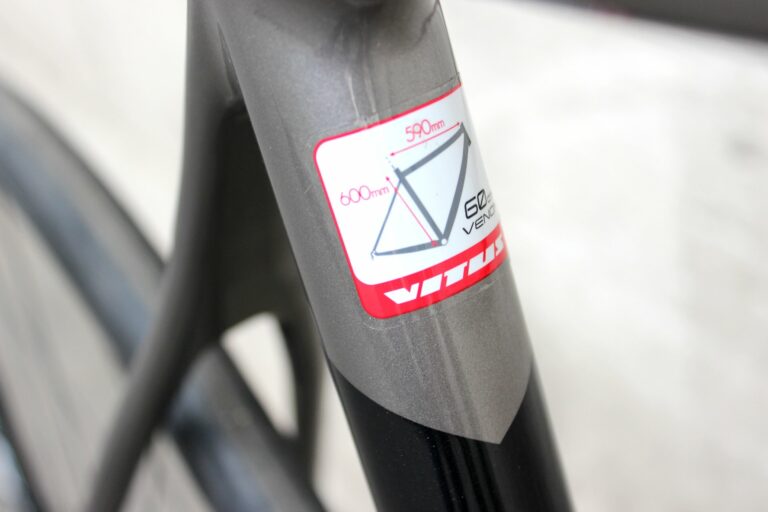Manabu Tatekawa, the Japanese giant’s global marketing chief, points to the Dura-Ace logo when I ask him to describe the importance of Dura-Ace within the corridors of power at Sakai City, the global headquarters of cycling’s biggest player. The word Shimano is conspicuous by its absence.
“When the original version became available in 1973, Shimano had already decided its priority as the flagship product; that its importance would be the same as the company name. The Dura-Ace logo stood alone.”
The XTR and Saint groupsets, for cross-country and downhill mountain biking respectively, now share equal billing as flagships, Tatekawa continues. Campagnolo and SRAM will doubtless make their own claims to the summit of road bike componentry, but even they might offer a respectful nod to Dura-Ace’s unwavering excellence over five decades.
Four years in the making
May 2012. Kortrijk, Belgium.
A 23-year-old Alex Dowsett, wearing the colours of Team Sky, is the guest of honour and leads a gang of journalists on a ride from the team’s service course.
Dura-Ace 9000 is the product under discussion and on the fleet of test bikes placed at the disposal of those who will ride with Dowsett. Four-arm chainsets and 11-speed transmissions are the hot topics. Yet, even here, Harada and his colleagues have their eyes fixed on the future.
“We were already thinking of the next iteration,” he reveals, this time at the Dura-Ace R9100 launch in Normandy, just days in advance of the 2016 Tour de France.
R9100 has been four years in the making. Its key features perhaps don’t grab headlines as easily as adding another sprocket, or removing an ‘arm’ from a chainset spider, but there is detail here, and evidence aplenty of the hard graft of refinement. Is this a greater challenge for the engineer?
